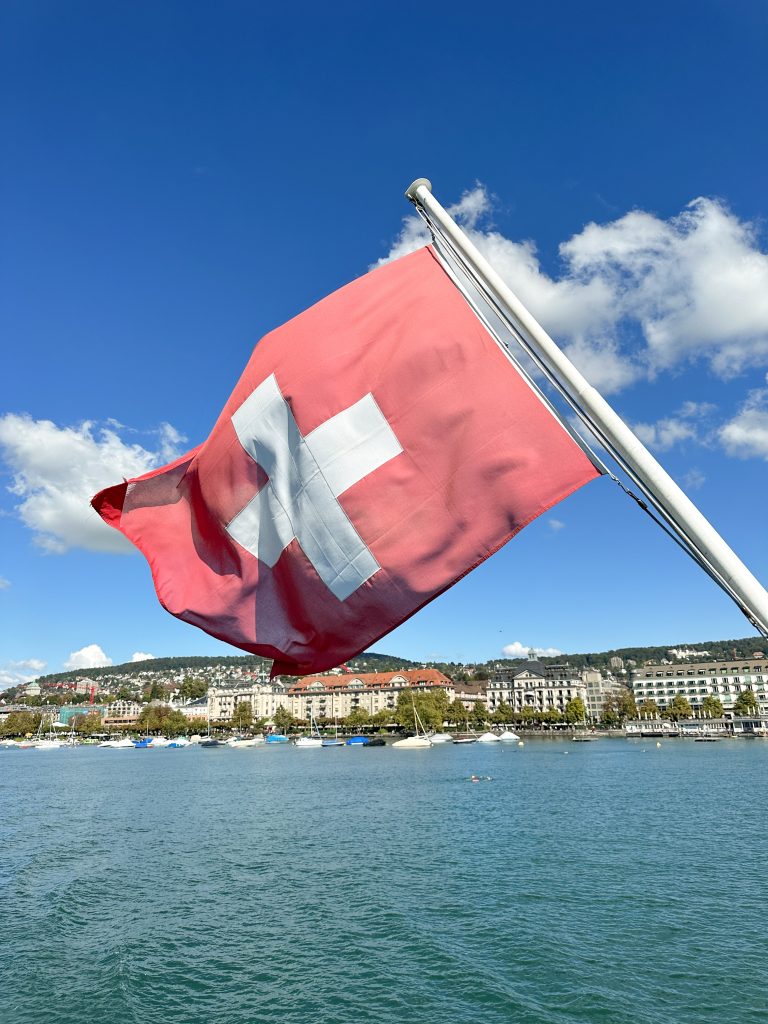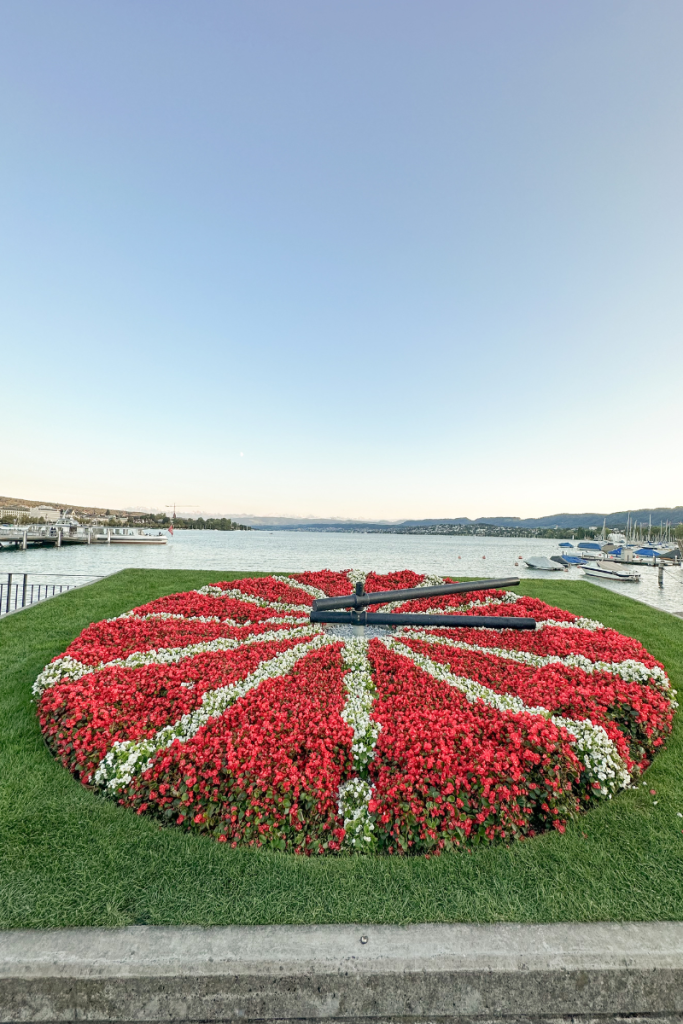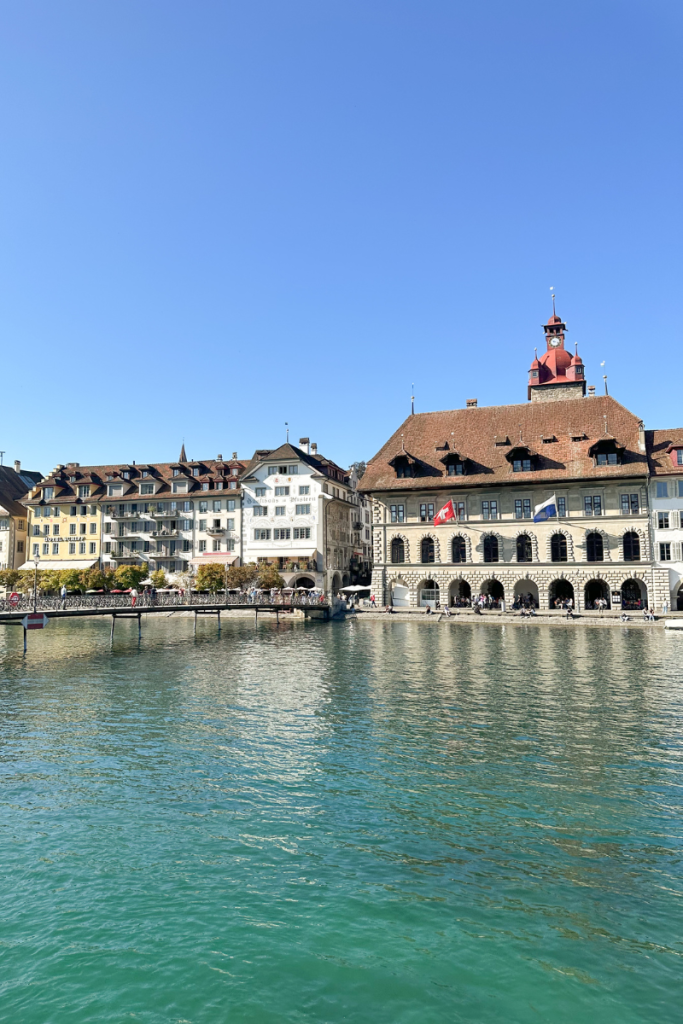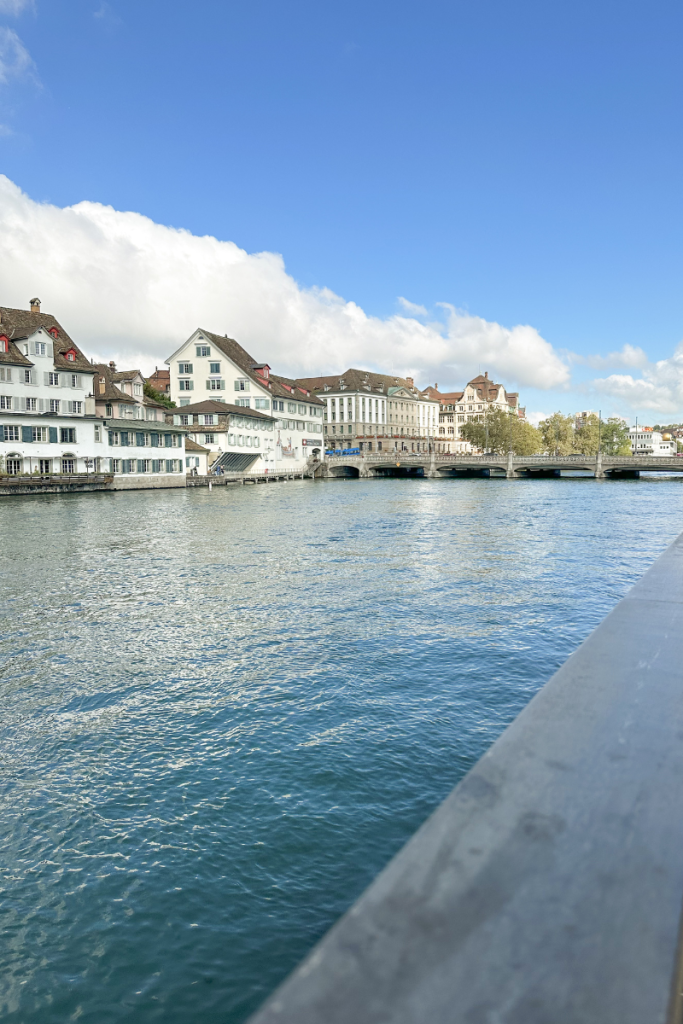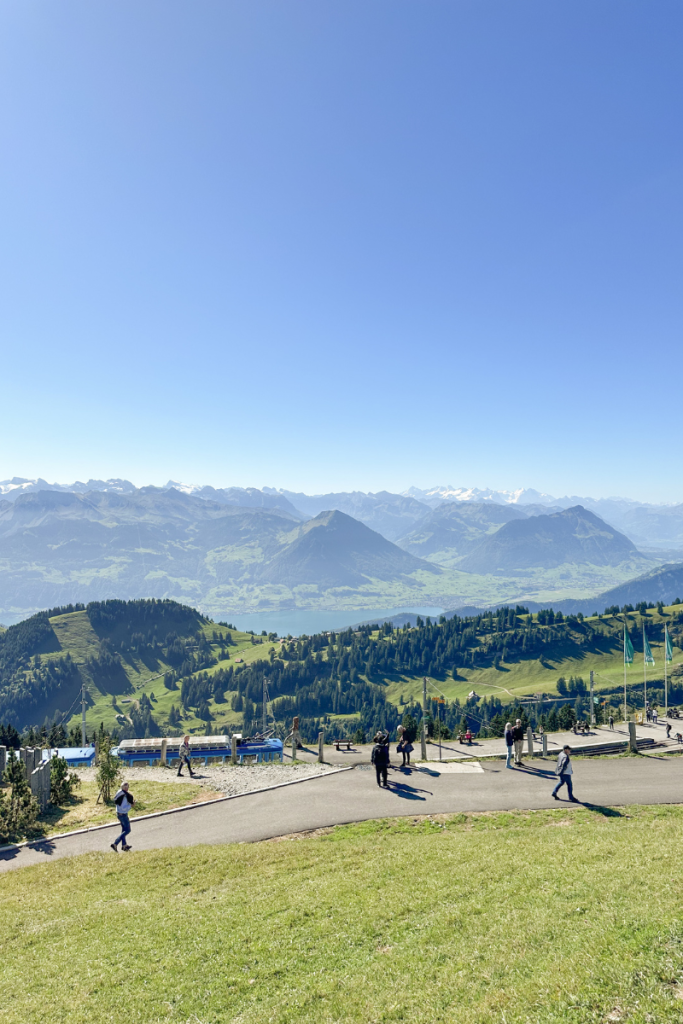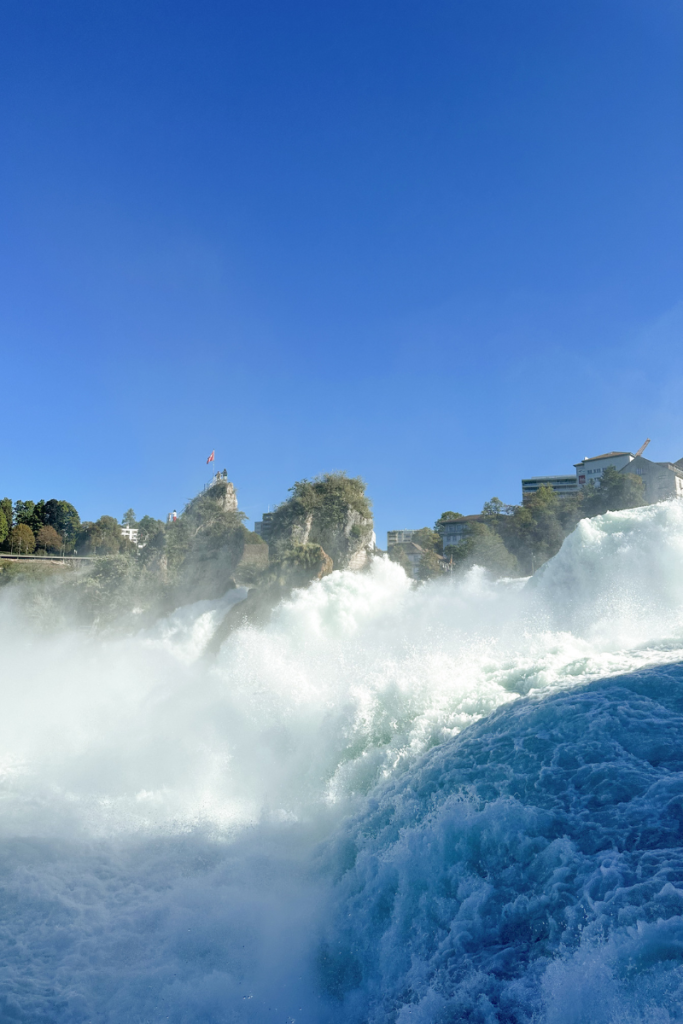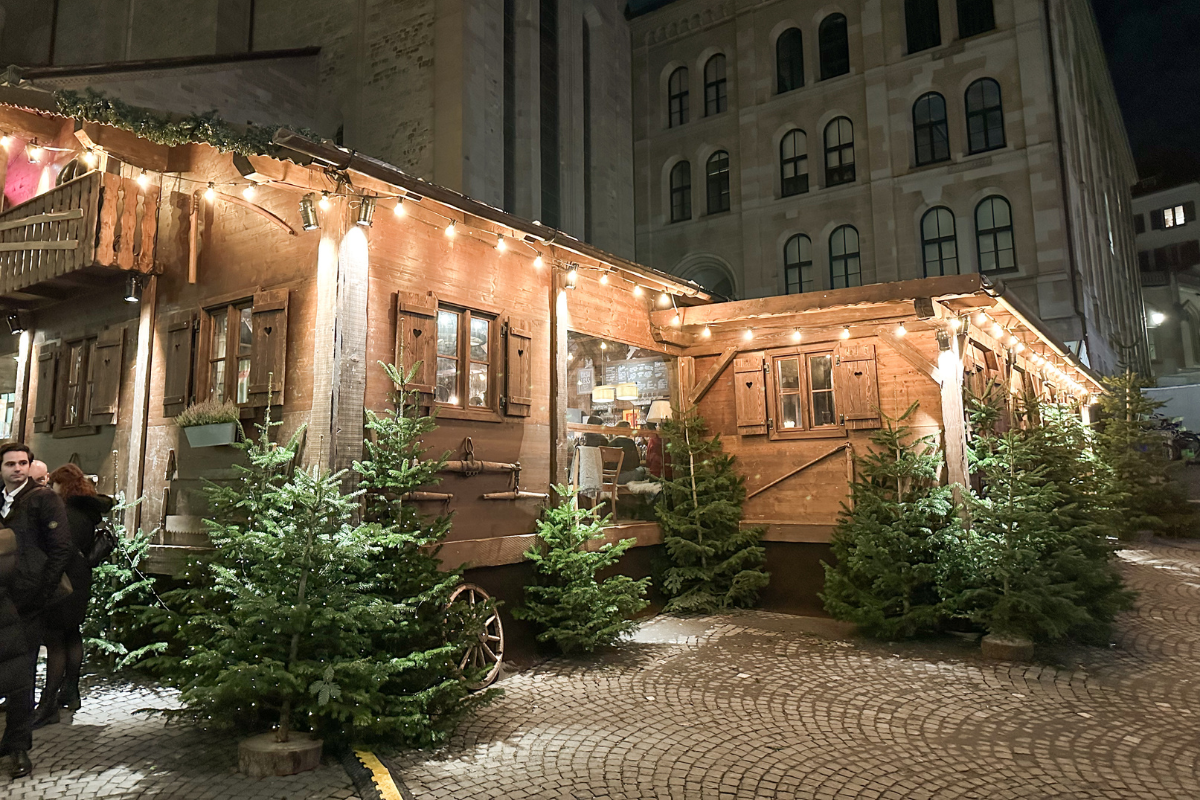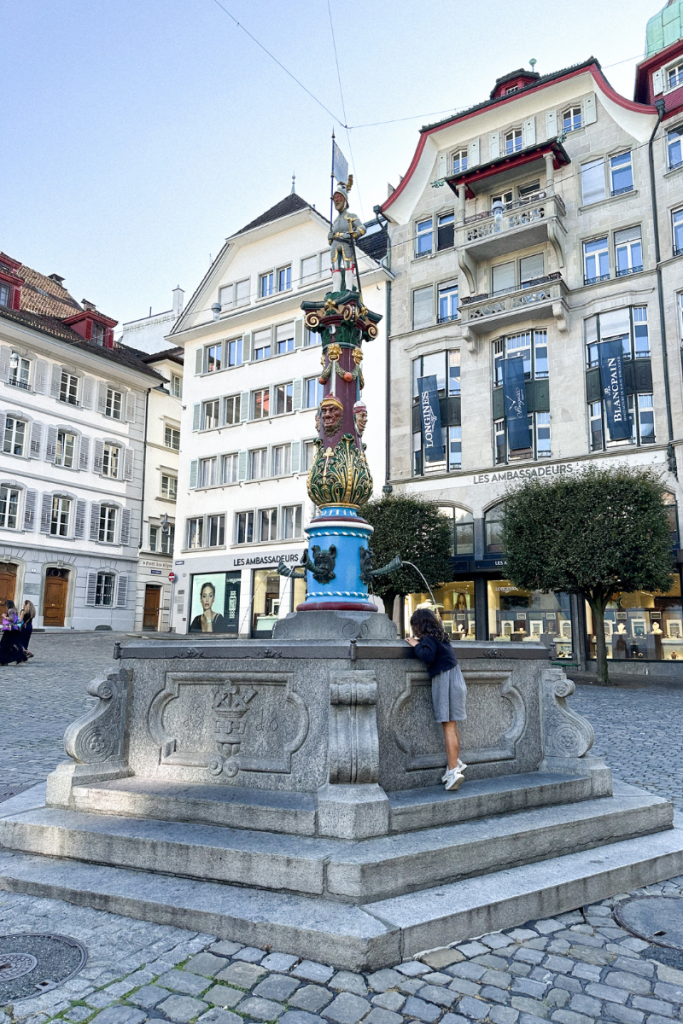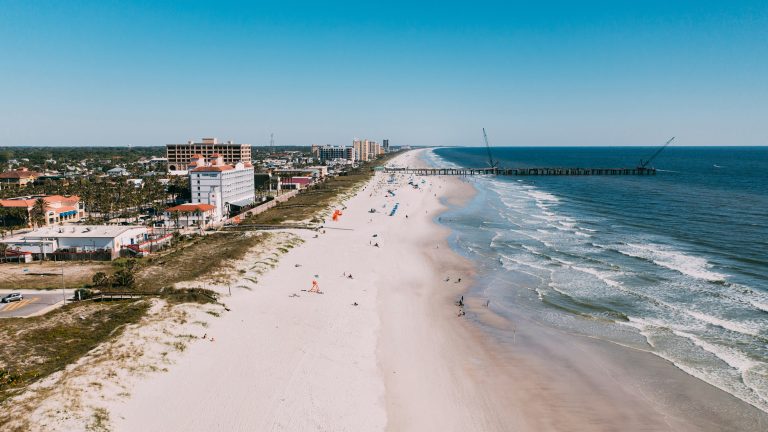The Best Month To Visit Switzerland – Family Travel Guide
The question of the best month to visit Switzerland isn’t straightforward. After planning a few Swiss adventures, I’ve learned that timing truly makes or breaks a vacation here.
Picture this: arriving to find closed cable cars and empty mountain villages, or alternatively, fighting through summer crowds just to glimpse the Matterhorn.
Hi there! Just a heads up- if you click on a link within this post I may receive a small commission from affiliate links. I appreciate your support of To Travel & Beyond and hope to bring you great recommendations for many years to come! See the full privacy policy here.
Thankfully, I stumbled upon helpful posts while planning our first trip to Switzerland and realized that there were many mountain adventures that would be closed for the season. Still, we planned a trip around what was open and fell in love with the country, and I’ve returned during different seasons to discover Switzerland’s year-round magic.
In this guide, I’ll break down what each month offers families seeking Swiss adventures – from weather patterns to crowd levels and everything in between.
Whether you dream of skiing pristine slopes (this is not me FYI) or hiking through flower-filled meadows (this is 100% me!), I’ll help you pinpoint the best month to visit Switzerland for your family.
Switzerland’s Seasonal Personality
Switzerland experiences four distinct seasons, each painting the landscape differently and offering unique family adventures.
Climate Diversity in a Small Package
This small country contains remarkable climate variety – Alpine regions differ significantly from lowland cities like Zurich or Geneva. Winter brings reliable snow to mountains while cities might see rain instead. Summer delivers perfect hiking conditions up high while cities occasionally swelter.
Winter transforms Switzerland into a snow-covered fairytale from December through February. The Swiss Alps become playgrounds for winter sports enthusiasts, while Christmas markets warm city squares.
Spring arrives gradually between March and May, bringing wildflowers to lower elevations while snow still caps the mountains. Summer opens every hiking trail and mountain pass, but also brings the year’s largest crowds.
When Should Your Family Visit?
Families should align travel dates with their primary interests:
- Winter sports enthusiasts need snow, which means December-March will be ideal
- Hiking families find the best trail conditions from June through September
- Budget-conscious travelers should consider shoulder seasons like May and October
The perfect month depends entirely on what you want to experience in this Alpine paradise.
Are you planning a family vacation to Switzerland? Check out the full post dedicated to everything you should know about traveling to Switzerland with kids!
Winter Magic: December to February
Switzerland transforms into an enchanting winter destination from December through February. For families who love winter activities, this period showcases Switzerland at its most iconic.
Snow-Covered Dreams
The Alpine regions become winter sports paradises, with world-class ski resorts offering perfectly groomed slopes and excellent family facilities. Even non-skiers find plenty to enjoy:
- Sledding down gentle slopes
- Snowshoeing through silent forests
- Horse-drawn sleigh rides through picture-perfect villages
Many resorts offer dedicated children’s areas where kids learn winter sports with specialized instructors.
Festive Atmosphere
December brings Christmas markets to cities and towns across Switzerland. The markets in Basel, Zurich, and Montreux rank among some of Europe’s most charming, with handcrafted gifts and sweet treats for children. The festive spirit creates unforgettable family memories, especially in picturesque medieval towns like Gruyères.
Personally, we love the markets throughout Zurich. They are unique and beautiful and felt more handcrafted compared to some of the other cities.
Winter temperatures vary dramatically by elevation. Lowland cities typically experience daytime temperatures between 30°F and 40°F (-1°C to 4°C), while mountain regions remain much colder.
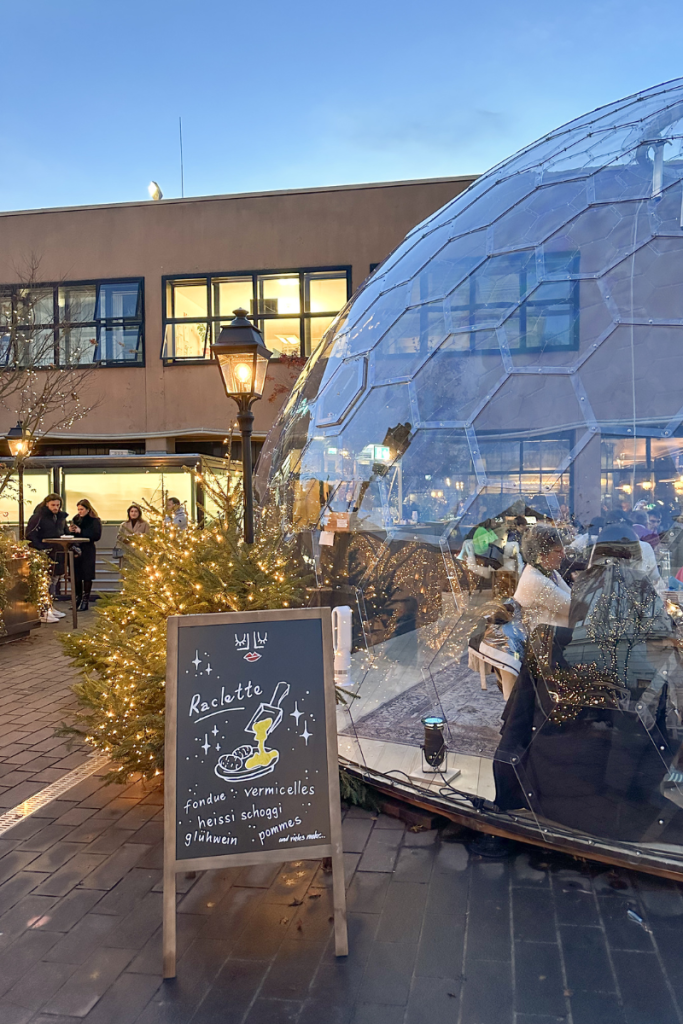
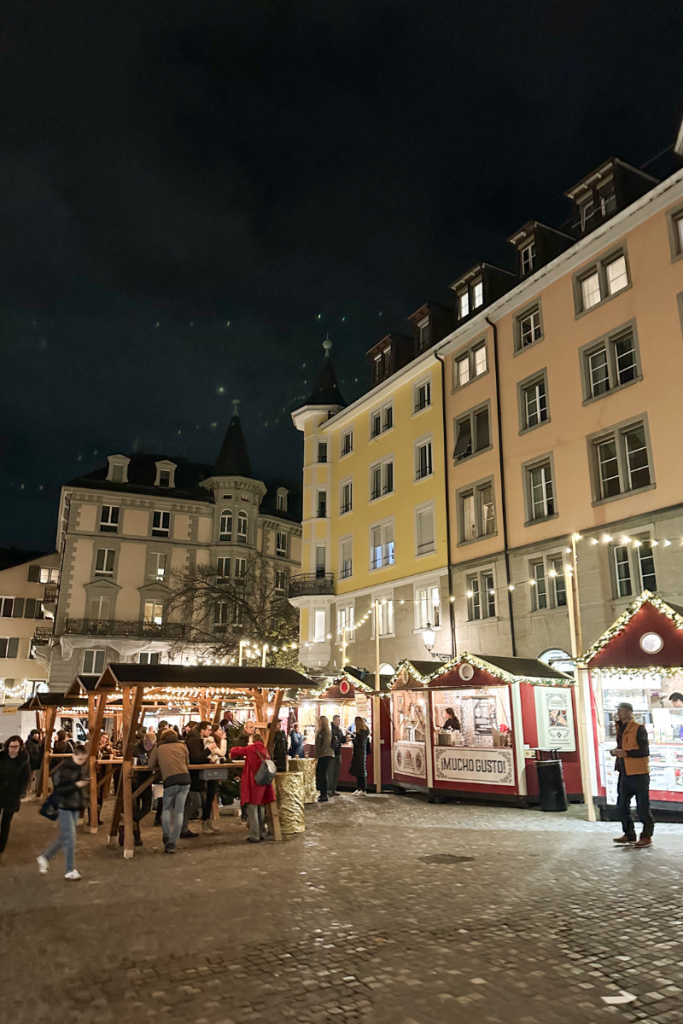
Who Should Visit during the Winter Months?
The benefits include breathtaking snow-covered landscapes and authentic Swiss winter experiences. January (outside holiday periods) often sees fewer tourists, creating a more relaxed atmosphere.
Winter suits families who prioritize skiing or experiencing quintessential Swiss traditions. If your children dream of building snowmen beneath the Matterhorn or learning to ski, December through February delivers Switzerland’s classic winter experience.
Just pack plenty of layers – temperatures frequently drop below freezing, especially at higher elevations.
Check out my guide to packing for Europe in the winter here! On this list, you will find everything you need to know about layering and find links to exactly what I packed and wore!
The Spring Awakening: March and April
March and April represent Switzerland’s most unpredictable yet fascinating transition period. This bridge between winter and spring creates a season of contrasts where snow still covers higher elevations while valleys burst with the first signs of flowers, green grass and new life!
Ski in the Morning, Picnic in the Afternoon
March often delivers excellent skiing conditions with longer daylight hours and slightly warmer temperatures than winter. Many Swiss families consider this the ideal time for ski holidays as the February crowds disappear. Popular resorts maintain reliable snow conditions while offering reduced rates.
By April, lower elevations fully embrace spring. Cities like Lugano and Locarno in the southern Ticino region see temperatures reaching the comfortable 60s°F (15-20°C), with Mediterranean-like vegetation coming alive.
The Budget-Friendly Sweet Spot
These months offer significant advantages for cost-conscious families:
- Accommodation prices drop dramatically from winter peaks
- Excellent deals at luxury properties
- Restaurants and attractions operate without requiring reservations
- Transportation runs smoothly with fewer passengers
The primary disadvantage? Limited access to certain mountain areas. Cable cars and mountain railways often schedule annual maintenance during this shoulder season.
Perfect For Flexible Families
Early spring works best for travelers seeking value and authentic experiences. If you’re comfortable with some weather uncertainty, March and April reward you with fewer tourists and the unique beauty of Switzerland’s seasonal transition.
The mix of winter and spring activities creates versatile vacation options – experience two seasons in a single Swiss day.
May’s Hidden Treasures
May delivers a special sweet spot in the Swiss travel calendar that many visitors overlook. As late spring fully establishes itself, the country emerges from winter with vibrant energy.
Alpine Bloom Begins
The famous Alpine Blooms flower meadows begin their spectacular show in May, starting at lower elevations and gradually climbing higher as the month progresses. Fields of crocuses, primroses, and early wildflowers create colorful carpets across the countryside.
Weather proves generally pleasant, with lowland temperatures typically ranging from 55°F to average highs of 70°F (13°C to 21°C). Mountain areas remain cooler but increasingly accessible as snow melts from all but the highest peaks.
Pre- Summer Season Advantages
May offers several compelling benefits for family travelers:
- Tourist numbers remain moderate before the summer surge
- Most attractions and mountain facilities reopen after winter closures
- Significantly lower prices than high season summer months
- Comfortable temperatures for exploring cities and lower hiking trails
Outdoor families appreciate May for comfortable hiking conditions without summer’s intense heat or crowds. The month delivers sufficiently warm weather for picnics and outdoor adventures while avoiding summer’s occasional heat waves.
Planning a trip to Europe at anytime will likely lead to questioning what to pack. Read the complete guide to packing for Europe in any season to see exactly what I recommend!
Summer’s Alpine Symphony: June to August
“Is summer the best month to visit Switzerland?”
Many families ask this question when planning their first Swiss adventure. The answer depends entirely on what type of vacation you are looking for.
Summer transforms Switzerland into an outdoor playground from June through August. Alpine meadows explode with wildflowers, crystal-clear lakes warm enough for swimming, and even the highest mountain passes open completely. For families who prioritize hiking, swimming, and maximum accessibility, summer delivers Switzerland at its most vibrant.
The July Sweet Spot
July typically offers Switzerland’s most reliable weather. Daytime temperatures in cities like Zurich and Geneva range from 75°F to 85°F (24°C to 29°C), while mountain areas provide refreshing relief around 65°F to 75°F (18°C to 24°C). Occasional thunderstorms roll through, especially in the afternoons, but they usually clear quickly.
Zermatt showcases perfect summer conditions with mornings that typically dawn clear for mountain excursions, while afternoons occasionally bring brief thundershowers. These weather patterns create ideal opportunities for both active adventures and relaxed café stops. The Matterhorn reveals itself gloriously most mornings before clouds gather around midday.
When The Lakes Are Calling
Swiss lakes reach their most appealing temperatures by mid-summer. Lake Geneva, Lake Zurich, and countless smaller Alpine lakes provide perfect swimming conditions. Public beaches (many free) offer excellent facilities for families, including shallow swimming areas for younger children.
The lakeside promenades transform into buzzing social hubs with outdoor dining, impromptu music, and family-friendly entertainment. Lake Lugano particularly stands out with its Mediterranean atmosphere and numerous family activities along its shores.
Summer brings Switzerland’s festival season to life. Cultural events fill the calendar, from the world-famous Montreux Jazz Festival to smaller village celebrations. The Swiss National Day (August 1) deserves special mention – fireworks illuminate Alpine backdrops while communities gather for food, music, and celebration.
Weighing the Summer Trade-offs
The primary drawback? Everyone else has the same idea. Summer brings Switzerland’s heaviest tourist traffic, especially in iconic destinations like Lucerne, Interlaken, and Zermatt. Prices reach their annual peak, particularly in August when much of Europe takes vacation.
Accommodations should be booked months in advance for summer visits. Consider staying in smaller villages connected by Switzerland’s excellent transportation network rather than major tourist hubs. Places like Wengen instead of Interlaken or Vevey instead of Montreux offer similar experiences with less crowding.
Summer works best for families seeking maximum mountain accessibility and comfortable temperatures for extended outdoor activities. If your priority list includes swimming, high-altitude hiking, and full access to every Swiss attraction, June through August delivers despite the crowds and costs.
The Insider’s Choice: September
Ask Swiss locals about the best month to visit Switzerland, and many will recommend September without hesitation. This perfect transition between summer and fall delivers a unique combination of advantages that savvy travelers prize.
I would echo this as well. Our September visit to Switzerland was nothing short of a dream!
The summer crowds vanish almost overnight after schools reopen across Europe in early September. Suddenly, popular viewpoints and attractions that felt overcrowded just weeks earlier offer space to truly appreciate their beauty. Trails that required single-file hiking in August become peaceful again, allowing families to spread out and enjoy nature at their own pace.
Weather remains remarkably stable throughout most of September. Daytime temperatures typically range from 65°F to 75°F (18°C to 24°C) in lowland areas – perfect for active exploration without summer’s occasional heat. Mountain regions cool more noticeably but remain accessible and comfortable for hiking with proper layers.
The first dusting of snow might appear on the highest peaks by month’s end, creating stunning photography opportunities where white-capped mountains rise above autumn-tinted forests.
It’s also the perfect time of year to have a home base and take day trips around Switzerland. I recommend staying in Zurich and planning day trips from there to see more of Switzerland while not having to unpack and repack. Check out the complete guide to day trips from Zurich!
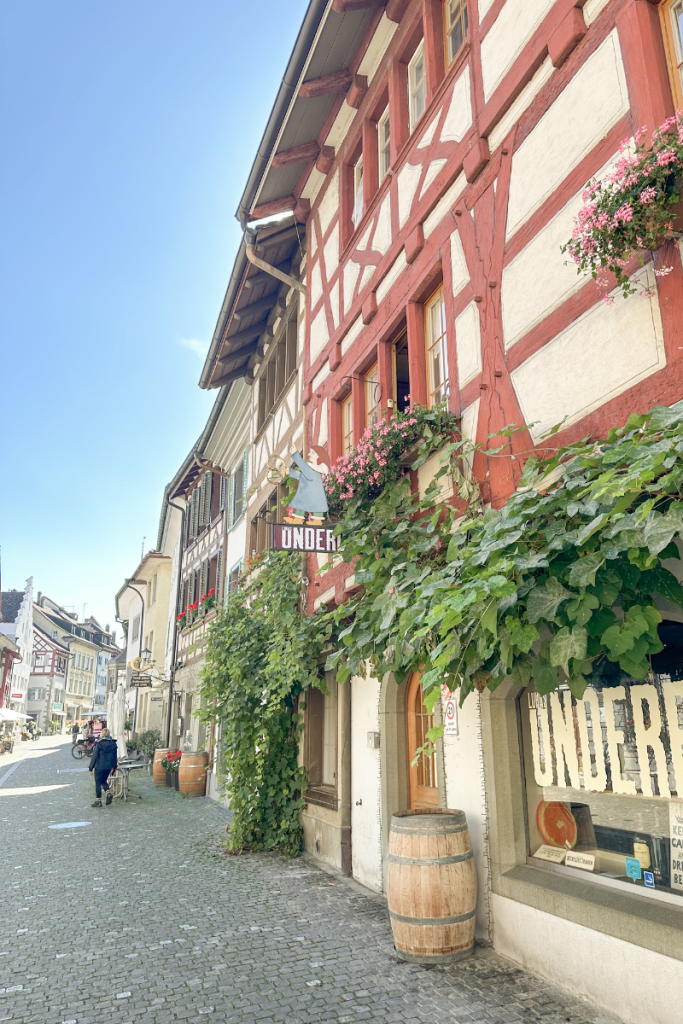
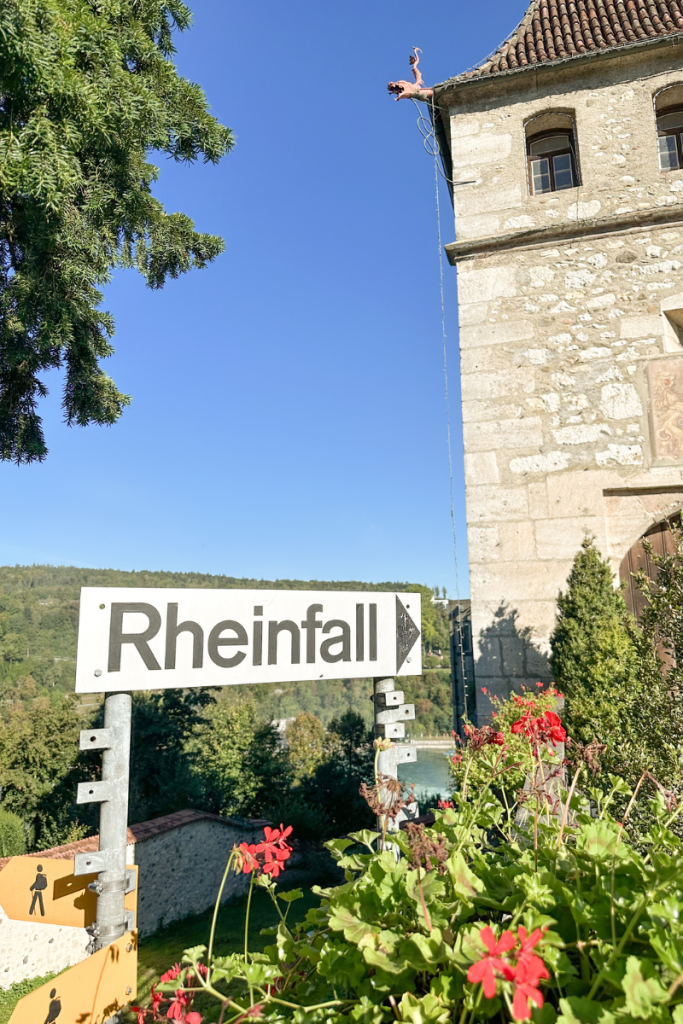
Harvest Experiences
September brings Switzerland’s harvest season, adding rich cultural dimensions to your family travel experience. Vineyards across the Lake Geneva region and Ticino buzz with activity. Many hold family-friendly harvest festivals where children can participate in grape stomping or fruit picking.
Traditional alpine cheese-making reaches its peak as cows descend from their summer mountain pastures in colorful parades called “Alpabzug” or “Désalpe.” These authentic celebrations feature locals in traditional dress, decorated cattle, music, and food markets selling fresh regional products. The Emmental region offers particularly authentic versions of these festivities that haven’t been overly commercialized.
These authentic cultural experiences happen naturally in September without being staged for tourists. They provide families with glimpses into real Swiss traditions that summer visitors often miss entirely.
Practical Advantages for Families
September delivers several practical benefits that families appreciate:
- Accommodations cost significantly less than during peak summer, with many hotels reducing rates by 20-30% while still offering full services.
- Restaurant reservations become easier to secure, even at popular establishments that require booking weeks ahead during summer.
- The weather remains stable enough for confident planning yet cool enough for comfortable hiking and sightseeing.
- Almost all summer attractions remain open through September, unlike the shoulder season of late October, when many begin closing.
For families seeking the perfect balance of good weather, reasonable prices, and authentic experiences without crowds, September stands out as possibly the best month to visit Switzerland.
October’s Golden Light
October paints Switzerland in nature’s most spectacular colors as deciduous forests transform into tapestries of gold, orange, and crimson. This visual feast draws photographers and nature lovers from around the world.
The Swiss call this season “golden autumn” for good reason. The light quality changes dramatically – sunlight arrives at a lower angle, creating a warm glow that makes even ordinary scenes look extraordinary. This natural phenomenon transforms vacation photos into truly special memories.
Weather patterns shift significantly in October. The month typically begins with conditions similar to September, but temperatures drop noticeably by month’s end. Daytime highs typically range from 50°F to 65°F (10°C to 18°C) in lowland areas and cooler in the mountains.
Clear days deliver spectacular visibility, often better than summer when haze can obscure distant views. On particularly clear October mornings, Alpine panoramas extend for incredible distances.
The Fog Phenomenon
October introduces a fascinating weather pattern unique to Switzerland. Cold air often settles in the lowland areas between the Alps and the Jura mountains, creating a thick fog blanket (locals call it “nebelmeer” or “sea of fog”). Meanwhile, mountain areas above approximately 3,000 feet enjoy brilliant sunshine.
This creates a magical opportunity for families – ride a cable car or mountain railway through the fog layer and emerge into brilliant sunshine with a cottony white cloud carpet below. The Rigi, Pilatus, and Uetliberg (near Zurich) offer particularly accessible experiences of this phenomenon.
This fog inversion appears otherworldly, especially to children experiencing it for the first time. The cogwheel railway from foggy Arth-Goldau to the Rigi summit provides one of the most dramatic experiences of this weather phenomenon, emerging from dense fog into brilliant sunshine with fog filling the valleys below like cotton candy.
Practical Considerations
October requires flexible planning as weather grows more unpredictable. Pack layers and prepare for temperature swings. Many mountain facilities begin reducing operations in mid-to-late October, with some closing entirely.
However, October offers significant value advantages:
- Hotel rates drop substantially from summer peaks
- Tourists thin out dramatically, especially after the first week
- Museums and indoor attractions operate normal hours without summer crowds
- Authentic daily Swiss life becomes more visible as tourist season winds down
For families who prioritize fall colors, value, cultural experiences, and don’t mind some weather unpredictability, October delivers a uniquely rewarding Swiss experience. Just pack plenty of layers and maintain flexible expectations about mountain access.
Late Autumn Transition: November
November represents Switzerland’s true off-season – a time of transition when the country prepares for winter. This month delivers Switzerland at its most authentic, stripped of most tourists and seasonal decorations.
Many travelers overlook November entirely, making it perfect for visitors seeking solitude and local connections. Cities return completely to their residents, creating opportunities to experience genuine Swiss culture rather than its tourism-oriented version. While November is considered low season, it’s worth determining if it’s the right time for your family!
Weather turns decidedly cooler, with daytime temperatures typically ranging from 40°F to 50°F (4°C to 10°C) in lowland areas. Mountain regions often receive their first significant snowfalls, though ski resorts typically remain closed until December except for glacier areas like Zermatt and Saas-Fee.
The Urban Advantage
November shifts the Swiss travel focus from mountains to cities. Zurich, Geneva, Bern, and Basel reveal their authentic character as locals reclaim cafés, museums, and cultural venues. The performing arts season reaches full swing with world-class concerts, operas, and theater productions throughout the country.
Museums often launch major exhibitions in November, knowing locals now have time to visit. The Kunsthaus Zurich, Fondation Beyeler near Basel, and MAMCO in Geneva typically unveil significant shows during this period.
Value Reaches Its Peak
November delivers unmatched value for budget-conscious travelers:
- Hotel rates reach their annual low point, with luxury properties often available at half their summer prices
- Restaurants eagerly welcome customers during this quiet period, sometimes offering special menus
- Transportation runs normally but with fewer crowds, creating more comfortable experiences
- Shopping becomes more pleasant without summer crowds, especially as Christmas items begin appearing
The primary trade-off involves mountain access. By mid-November, many mountain railways and cable cars close for maintenance before winter season. The weather often brings rain to lowland areas and snow to mountains, creating limited visibility at times.
For families who prioritize urban experiences, cultural activities, and maximum value, November offers surprising advantages despite its reputation as Switzerland’s least appealing month.
The Verdict: Choosing the Best Month To Visit Switzerland
After analyzing Switzerland through all seasons, which truly emerges as the best month to visit Switzerland for families? The answer depends entirely on your priorities.
For maximum versatility and balanced experiences, September stands out as Switzerland’s most perfect month. It combines reliable weather, reduced crowds, reasonable prices, and nearly full access to attractions. The pleasant temperatures support almost any activity while the cultural harvest festivals add unique dimensions to the experience.
For families who prioritize winter sports and Christmas magic, early December delivers special charm before holiday crowds arrive. The snowfall typically proves reliable in Alpine regions while Christmas markets create festive atmospheres in cities and towns.
For hiking enthusiasts and outdoor families, July offers Switzerland’s most reliable mountain conditions. The occasional higher prices and crowds become worthwhile trade-offs for perfect Alpine experiences with full trail access and optimal weather.
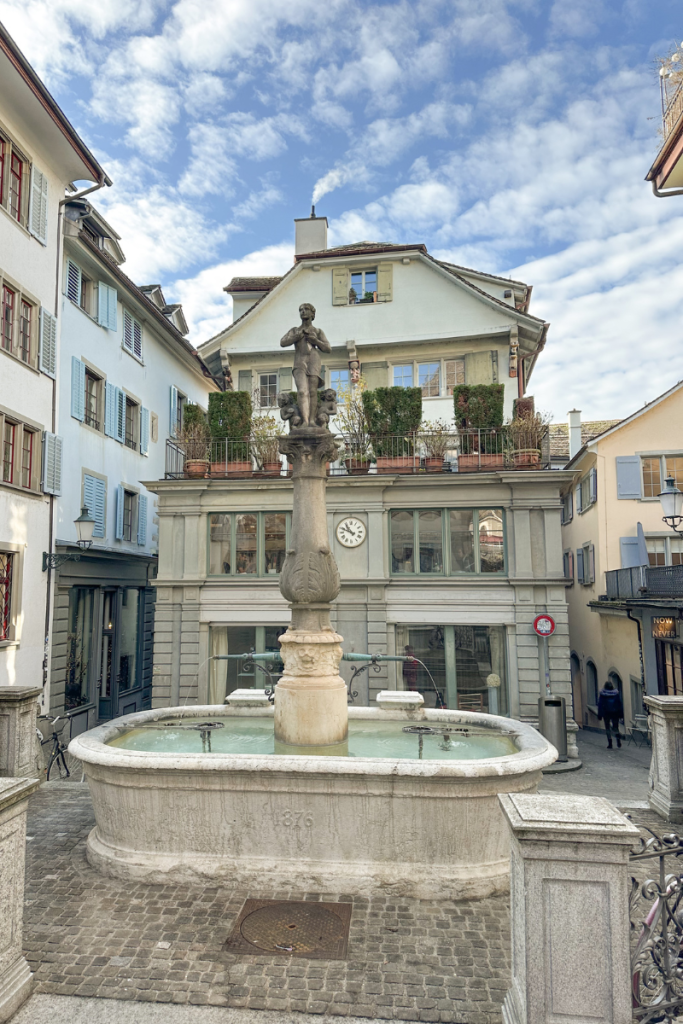

Finding Your Perfect Match
Consider these key factors when selecting your ideal month:
- Budget consciousness points toward November, May, or October when Switzerland offers its greatest values, but still a good time to visit.
- Crowd sensitivity suggests September, October, or early June before European school holidays begin.
- Weather priorities favor July and August for warmth and stability, or January-February for reliable snow conditions.
- Special interests might determine your choice entirely – winter sports enthusiasts need December through March, while hiking families find optimal conditions from June through September.
The truly best month to visit Switzerland aligns perfectly with your family’s specific priorities. The country rewards thoughtful timing with dramatically different but equally rewarding experiences throughout the year.
Weather Patterns: What to Expect
Switzerland’s climate varies dramatically by region and elevation, creating three distinct climate zones that travelers should understand before choosing when you will visit Switzerland.
Alpine Regions
Winter brings average temperatures often below freezing, while summer days hover between 50°F and 75°F (10°C to 24°C) with cooler temperatures in the evenings. Weather changes rapidly here – a sunny morning can transform into an afternoon thunderstorm within an hour.
Central Plateau
Cities like Zurich, Bern, and Lake Lucerne experience moderate seasonal changes. Summer brings pleasant warmth between 65°F and 85°F (18°C to 29°C), while winter temperatures typically range from 25°F to 45°F (-4°C to 7°C) with occasional snowfall.
Mediterranean South
The Ticino region enjoys a milder climate than the rest of Switzerland. Summer temperatures frequently climb above 85°F (29°C), while winter rarely drops below freezing. This region offers a Mediterranean escape within Switzerland’s borders.
Switzerland demands strategic packing regardless of season:
- Layering pieces for the country’s dramatic daily temperature swings
- Hiking shoes with proper traction for both urban exploration and mountain trails
- Rain protection even in summer (unexpected Alpine storms)
- High-SPF sun protection for the intensified UV exposure at elevation
Check out the Ultimate Guide to Packing for Europe to see exactly what I pack for all seasons!
Smart Budget Planning
Switzerland’s reputation as an expensive destination holds true, but strategic timing dramatically impacts costs.
Price Patterns to Know
- Peak season (July-August and December 20-January 6) brings 30-50% higher accommodation rates and occasional minimum-stay requirements in popular destinations.
- Mid-season (June, September, and February) strikes a balance between good weather and moderate pricing.
- Value season (October-November, late January, and March-May) delivers Switzerland’s best deals, with luxury properties often cutting rates by 40-50% while most attractions remain open.
Family-Friendly Savings
Switzerland offers several money-saving advantages for families:
- Children under 6 travel free on public transportation
- The complimentary Family Card (with adult Swiss Travel Pass purchase) allows children 6-15 to travel free
- Family rooms provide better value than booking separate accommodations, especially during shoulder seasons
- Mountain destinations offer substantial family package savings during quieter periods, often including lift tickets and activities
The Swiss Travel Pass value varies seasonally. Summer provides maximum benefit with all mountain railways operating, while some included attractions close during shoulder seasons. I highly recommend purchasing it if you are traveling with even one child.
Navigating Crowds Strategically
Switzerland experiences predictable visitor patterns that smart travelers can navigate around.
Peak Periods to Note
- July and August bring the heaviest tourist traffic to iconic destinations like the Jungfrau region, Zermatt, Lucerne, and Interlaken. Expect lines and fully booked restaurants.
- Christmas through New Year creates winter’s busiest period, the festive season, especially in ski trip destinations and cities with famous Christmas markets.
- Easter week generates a mini-peak in ski areas as families utilize school holidays.
Discovering Quieter Times
Several periods offer remarkably peaceful Swiss experiences:
- Late September through October: Excellent hiking conditions without summer crowds
- November: Switzerland’s quietest month before Christmas preparations begin
- Mid-January: Dramatic drop in ski resort crowds after holiday festivities end
For experiencing popular attractions like the Jungfraujoch or Matterhorn Glacier Paradise, consider visiting in late September when you’ll find identical experiences to August but with significantly fewer visitors.
Swiss Festivals Worth Planning Around
Switzerland’s cultural calendar offers authentic experiences throughout the year that might influence your choice of the best month to visit Switzerland.
Winter Highlights
- The Basel Fasnacht (February/March) presents Switzerland’s largest carnival celebration with colorful parades and distinctive music that captivates visitors of all ages.
- Christmas markets transform cities throughout December, with Basel, Montreux, and Zurich offering particularly enchanting atmospheres.
Summer Celebrations
- The Montreux Jazz Festival (early July) brings world-class musicians to Lake Geneva’s shores with many free outdoor performances.
- The Swiss National Day (August 1) fills the country with fireworks against Alpine backdrops, traditional foods, and cultural demonstrations.
Autumn Traditions
- Alpabzug processions (September) celebrate the ceremonial descent of decorated cattle from summer Alpine pastures. The Emmental region hosts particularly authentic versions of these colorful events.
- The Autumn Festival in Lugano (early October) showcases the harvest with Italian-influenced food, music, and cultural demonstrations.
These festivals provide windows into authentic Swiss culture, though they typically require advance booking for accommodations, especially in smaller towns with limited lodging options.
Your Perfect Swiss Adventure Awaits
The best month to visit Switzerland isn’t universal – it’s when your family’s interests align with what Switzerland offers seasonally. September delivers balance for most travelers, while winter enthusiasts thrive from December through March. May and October reward those seeking value without compromise.
This small country reveals different facets of its character throughout the year. The magic lies in discovering Switzerland’s seasonal rhythms – whether it’s a quiet morning with the Matterhorn, an unexpected village festival, or a peaceful Alpine hike with only marmots for company.
Begin your journey with clear priorities, and you’ll likely find yourself planning a return trip before you’ve even departed.

